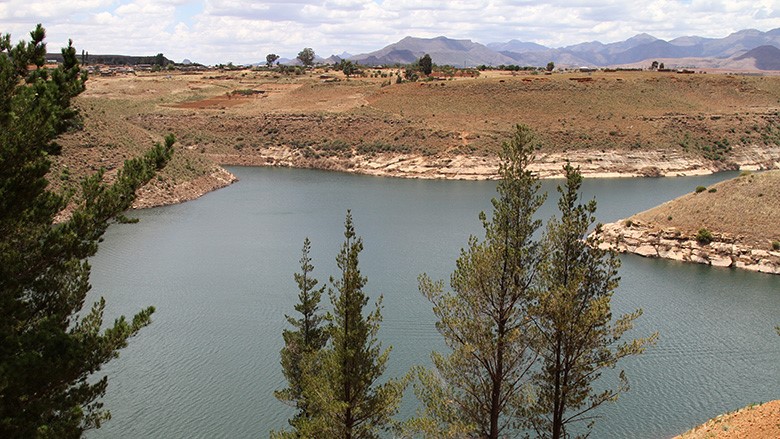Challenge
The Kingdom of Lesotho has an abundance of water in its mountainous areas. However, in the early 2000s in the country’s lowlands, where most of its population lives, water availability was an acute problem. Shortage of water, especially in the dry season, meant that people in the lowlands would have no water for months.
Lesotho’s export earnings largely come from the garment industry. Water and wastewater services are essential for these companies to thrive and continue making a significant contribution to the country’s economic output. The entire industry accounts for half of all water consumed in Maseru, and the lack of water and wastewater infrastructure presented a major impediment to continued growth. With climate change exacerbating already frequent droughts, and with increasing urban populations demanding more water, securing water supply was critical for Lesotho and its further socio-economic development.
Approach
Since 1983, the Lesotho Water Sector Improvement Project, (Phase II), an Adaptable Program Loan, is part of a long-term World Bank support program for Lesotho’s water sector, which was initiated in the late 1990s and approved in 2004. The program was designed to first address institutional weaknesses in the country’s water sector and improve urban service delivery under Phase I, and then support increased water supply under Phase II.
Phase II of the program sought to support the Metolong Dam and Water Supply program and ensure that the construction of the Metolong Dam and downstream bulk conveyance followed an environmentally sound, socially responsible, and financially viable framework. The program also set out to provide support to institutional capacity building activities.
In the long run, the project was designed to support the Sustainable Development Goals by significantly improving access to clean water supply and bridging the infrastructure gap. Additional water supply to Lesotho’s lowlands was expected to reduce concerns of inadequate water resources for the country’s growing industry and attract private investments to expand industrial activities.
Results
By the end of 2018, key results include:
- The project constructed 24 kilometers (km) of pipeline connecting the Metolong Dam and Teyateyaneng, bringing water and improving quality to more than 30,000 of Teyateyaneng’s citizens, of which 60 percent are women.
- Three hundred people in the affected communities were provided with capacity building and income-generating skills, along with compensation.
- Intensive livelihood restoration training of the two affected communities of Ratau and Motanasela was conducted, covering livelihood activities such as poultry, piggery, value chain, group dynamics conflict resolution, and social cohesion. Both communities established trust funds managed by the Standard Lesotho Bank to continue to support the program.
- Affected communities benefitted from improved an HIV/AIDS management program. HIV testing increased by 38 percent, and counseling enrollment increased from 25 percent at the beginning of the project to 63 percent at its midterm.
- The project provided water supply and electrified 80 villages in the project area
- Through the Environmental and Social Management Plan, the project helped identify ways to benefit the community and ensure the environmental sustainability of the project.
- The project benefitted from the Cultural Resources Management and Development Plan that helped to preserve the Southern Phuthiatsana subregion, home to over 30 cultural heritage sites.
- Over 400 improved community water points were constructed or rehabilitated under the project, benefitting more than 25,000 people.
- The project supported the implementation of the Water and Sanitation Policy of 2007 and the Water Resources Act of 2008 and other critical policy measures that helped strengthen Lesotho’s water sector.
